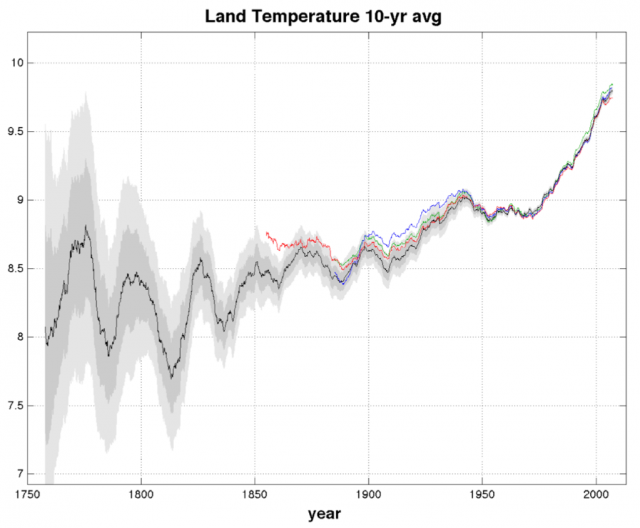
Yesterday, the National Snow and Ice Data Center announced that the Arctic melt season was probably over. This year’s melt had already set records back in August, so the only real question was just how low it would go. Assuming there’s not a downward fluctuation during the next couple of weeks, the answer is 3.41 million square kilometers, or about half of the typical low point observed from 1980-2000. That’s about 750,000 square kilometers below the previous low (set in 2007), an area roughly equivalent to that occupied by Texas.
In fact, as the NSIDC notes, every year since 2007 has seen unusually strong summer melts: “The six lowest seasonal minimum ice extents in the satellite record have all occurred in the last six years.” Although weather has undoubtably played a role in making this year’s melt unusually severe, the strong tendency toward record amounts of open water in the Arctic Ocean seems to lend credence to the ideas of Cornell professor Charles H. Greene, who has referred to recent trends as signs that we’ve entered what he called an “Arctic warm period.”
One of the surprising aspects of all of this is that it’s happening much faster than most climate models have predicted. Many of them had been indicating the ice would be relatively stable for most of the current century.
from Ars Technica



